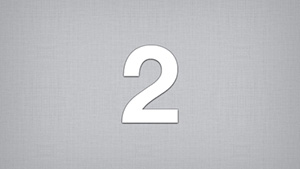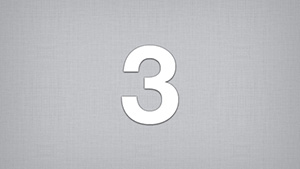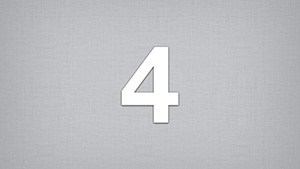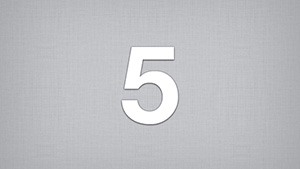First Aid Procedures & Vital Signs
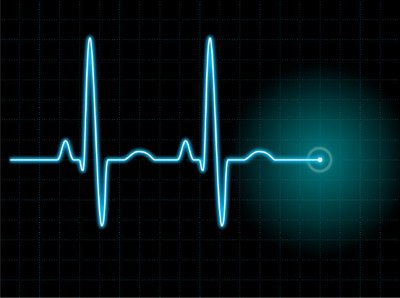
Taking someone’s vital signs is a critical first step when you are trying to give first aid. Even if it doesn’t seem outwardly necessary, there could be problems you can’t diagnose by sight.
But relax, none of this is brain surgery (I couldn't help it) but it is important none the less. When you are the first to encounter a victim that requires some sort of first aid it’s important to assess them and the situation at hand to make the correct decisions.
You also want to document anything that you do or know about the incident. This will be important if future help were to arrive, or if you are waiting on the paramedics.
Important: To get the most out of this first aid course please do not skip ahead. Everything in this course is designed to walk you through the learning process. From understanding your responsibilities and limitations, to what supplies you need and how to use them.
Course Information:
Lesson 1: Procedures & Vital Signs
Video Time: 19:08
This Lesson will explain some basic first aid procedures including taking a pulse and respiratory rate and some documentation procedures.
Safety & Vital Signs
Taking a Pulse - Personal Protection
Infection and Safety
You will need to take precautions to protect yourself from diseases that can be transmitted via blood and body fluids including HIV and Hepatitis B & C. There are different options available like latex or nitrile gloves, although we don’t recommend latex because of possible allergic reactions. You never know if the person you are trying to help is allergic to latex, so it’s better to err on the side of caution.
Although we suggest having a few pairs of gloves in your first aid kit, in an emergency situation gloves might not be an option. In this case a plastic bag, leather gloves or anything that will create a barrier between you and the victim’s bodily fluids will be better than nothing.
Surgical masks and safety glasses will also help create a barrier for airborne pathogens as well as a semi protective barrier for body fluids.
 A CPR Adjunct is a piece of protective equipment for helping to perform safe mouth-to-mouth resuscitation. With mouth-to-mouth resuscitation, there is a high probability of bodily fluid contact, especially with regurgitated stomach contents and mouth borne infections.
A CPR Adjunct is a piece of protective equipment for helping to perform safe mouth-to-mouth resuscitation. With mouth-to-mouth resuscitation, there is a high probability of bodily fluid contact, especially with regurgitated stomach contents and mouth borne infections.
A CPR Adjunct will help to protect the rescuer from infections the victim may carry. Not to mention you might be a little less reluctant to perform mouth to mouth with a CPR Adjunct.
The one pictured is one that will fit in a smaller first aid kit.
Vital Signs & Taking a Pulse
Course Information:
Lesson 1: Procedures & Vital Signs
Video Time: 19:08
This Lesson will explain some basic first aid procedures including taking a pulse and respiratory rate and some documentation procedures.
Before we learn how to take a pulse it is important to know the difference between a heart rate and a pulse. A heart rate refers to the heart, how many times it contracts in a given time. A pulse refers to the artery you are checking with your fingers, how many times it bulges when the blood flows through.
Most of the time these are the same with the exception of certain medical conditions that causes a bulge in the artery caused by the heart contracting and pushing blood out.
The pulse rate is an important vital sign because it gives you a baseline to assess the condition of the patient that might not be visually present.
How to find your pulse in your wrist
Hold one of your hands out with the palm facing upwards and the elbow slightly bent
Place your index (first) and middle fingers of your other hand on the inside of your wrist, just below the base of your thumb
Press the two fingers lightly on your skin until you feel your pulse
If you feel nothing, either press harder or search with your fingers for the artery and press again
Do not press your thumb on your wrist because it has its own pulse, an artery goes through it
Count how many beats there are over a 20-second period and then multiply the total by 3, which will give you your pulse rate (per minute). Some people prefer to continue for thirty seconds and then multiply by 2 or to count for a whole minute for better accuracy
Your resting rate - this is your heartbeat (per minute) after you have been resting (sitting or lying still) for ten minutes.
You can also find a pulse by pressing the same two fingers on the side of your neck (carotid artery), beside your Adam's apple in the hollow area.
If you haven’t already, watch the how to video above and see how it’s done.
Vital Signs – Respiratory Rate
The respiration rate is the number of breaths a person takes per minute. The rate is usually measured when a person is at rest and simply involves counting the number of breaths for one minute by counting how many times the chest rises.
Respiration rates may increase with fever, illness, and with other medical conditions. When checking respiration, it is important to also note whether a person has any difficulty breathing. A normal respiration rates for an adult person at rest range from 12 to 16 breaths per minute.
Vital Signs – Body Temperature
Normal body temperature can range from 97 degrees Fahrenheit to 99 degrees Fahrenheit. This can be done with a thermometer a few different ways, orally, rectally or under the arm. But sometimes a thermometer might not be an option.
The most common way to check for a fever without a thermometer is to feel the person's forehead or neck to see if it feels hotter than usual. Use either the back of your hand or your lips, since the skin on your palm isn't as sensitive as these other areas.
Documentation and Record Keeping
If we are in a situation where someone needs our help, documentation might be the last thing on our mind. But it can’t be overstated how important this is. If someone else were to come along to help out, or you were able to get the victim to proper help, the more information you can give the better.
One acronym you should try to remember is SBAR. This stands for: Situation - Background - Assessment - Recommendations. This is to get as much information as you can for emergency personnel or anyone who comes along later with more medical experience.
While there is no set way to document a patient, there is a suggested guide based around basic abbreviations used in the medical world today. Here are a few of them so you don’t need to write them all out.
PC: Presenting complaint – what is the problem? Why has the patient sought medical attention?
HPC: History of Presenting Complaint – when did the problem start? Have you had it before? What events led up to the problem occurring?
O/A: On Arrival – what did you find when you arrived at the scene (not always applicable)
O/E: On Examination – what did you find when you examined / looked at the patient?
PMH: Past (relevant) Medical History
Meds: Medication (past and present)
Allergies: Any known allergies?
Imp: Your impression of the patient / problem – suspected diagnosis
Tx: Specific treatment carried out by you
Plan: What’s the plan for this patient? Handover? Transport?
Pt: Patient
LoC: loss of consciousness
MoI: Mechanism of Injury
D&V: Diarrhea and vomiting
SoB: Short of breath
DiB: Difficulty in breathing
It’s not imperative to memorize all of these abbreviations, but it might help when time is of the essence.
Training & Resources
For a huge list of medical terms and abbreviations download the PDF below.
Get Started...
Click the button to start the next module where you will learn about blood loss and shock.
Course Home
Click the button to return to the main course page with the list of all the modules in the first aid course.
DISCLAIMER: THIS WEBSITE DOES NOT PROVIDE MEDICAL ADVICE
The information, including but not limited to, text, graphics, images and other material contained on this website are for informational purposes only. The purpose of this website is to promote broad consumer understanding and knowledge of various health topics. It is not intended to be a substitute for professional medical advice, diagnosis or treatment. Always seek the advice of your physician or other qualified health care provider with any questions you may have regarding a medical condition or treatment and before undertaking a new health care regimen, and never disregard professional medical advice or delay in seeking it because of something you have read on this website.


